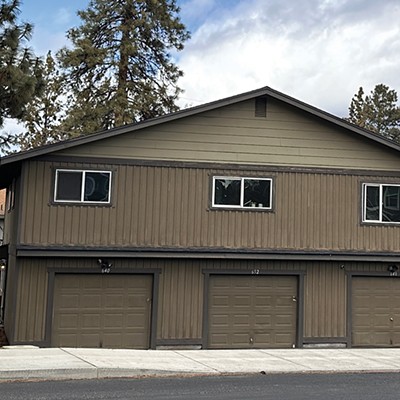Nearly every week, an alert like this comes into our newsroom from a local law enforcement agency:
"...The preliminary investigation revealed that a black 2007 Audi sedan was traveling northbound when for unknown reasons it crossed over the centerline. The Audi collided head-on in the southbound lane..."
Why do vehicles "cross over the centerline?" As drivers ourselves, we know we've done it when we're doing something besides watching where we're going—such as falling asleep or using a phone while driving.
In that light, is Oregon HB 2597—the new, stricter distracted driving law, in effect as of Oct. 1—a reflection of a nanny state, too concerned with controlling your behavior?
We don't think so, and we're concerned that Central Oregon's state legislators opposed it. Rep. Knute Buehler, R-Bend, and Sen. Tim Knopp, R-Bend, both voted against the law. (Rep. Gene Whisnant, R-Sunriver, was excused from the vote on "legislative business.")
"This law is an overreach and one I think will be difficult to enforce. I believe it will disproportionately impact low-income Oregonians," wrote Buehler in a statement to the Source. "...I also have concerns that this law could be used for the practice of pretextual stops which could increase instances of racial profiling."
Overreach? We disagree—and think it's high time that people—and our Central Oregon legislators— really see distracted driving as the dangerous problem it is. The new law takes a tougher stance on this issue, with the possibility of as much as a $1,000 fine for the first offense.
"This law is an overreach and one I think will be difficult to enforce. I believe it will disproportionately impact low-income Oregonians...I also have concerns that this law could be used for the practice of pretextual stops which could increase instances of racial profiling. — Rep. Knute Buehler
tweet this
To underline why that is necessary, we sent a writer to the corner of Greenwood Avenue and Bond Street in downtown Bend—a relatively busy thoroughfare for both cars and pedestrians—with the missive to stand there for one hour, counting the number of drivers who were texting, calling or otherwise using their phones. It didn't take long for the tally to rise.
We counted 38 drivers in 60 minutes who passed through the intersection while using their phones—or one driver roughly every 1.57 minutes. The survey took place around 4 pm on a Thursday, when the traffic flowed at about 115 cars passing every five minutes—equal to about 1,380 cars in an hour, or a rate of about .0275 percent of drivers using phones while driving.
"...when for unknown reasons it crossed over the centerline..."
The vast majority of the drivers using phones were estimated to be between age 30 and 50, and all but two were alone—information added to offer some context and assurance that these were not the "irresponsible youth" of today, as could possibly be assumed by readers looking to write off this brief investigation.
"The Audi collided head-on in the southbound lane..."
It wasn't a scientific investigation, but it should give you some idea of the pervasiveness of the problem—and an idea that the problem is pervasive even among "responsible" adults.
Should Oregon be doing all it can to stop the phenomenon of distracted driving, before another pedestrian or driver is killed? Yes.
Should our local legislators also be doing all they can? Yes, and it's too bad they didn't.
























